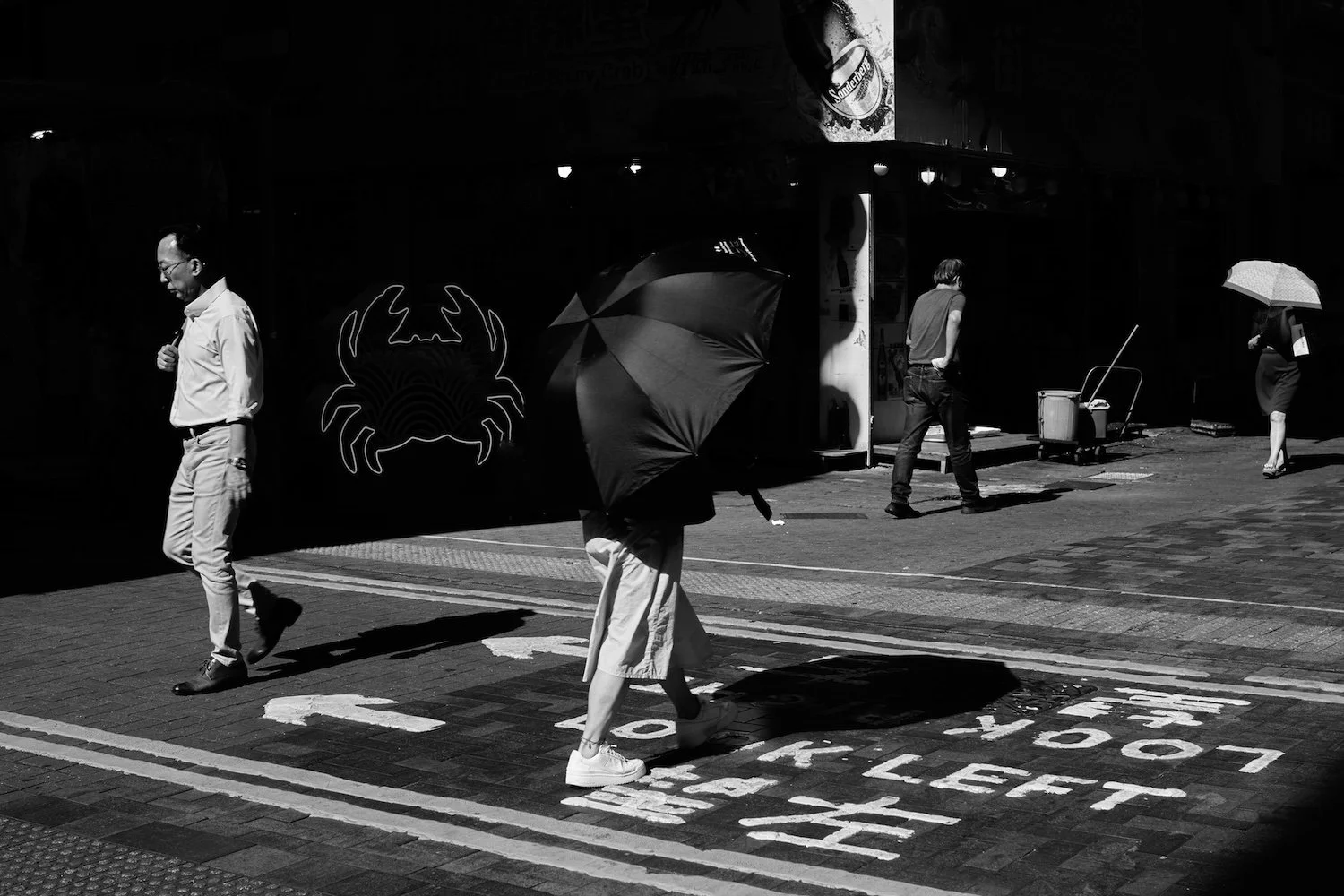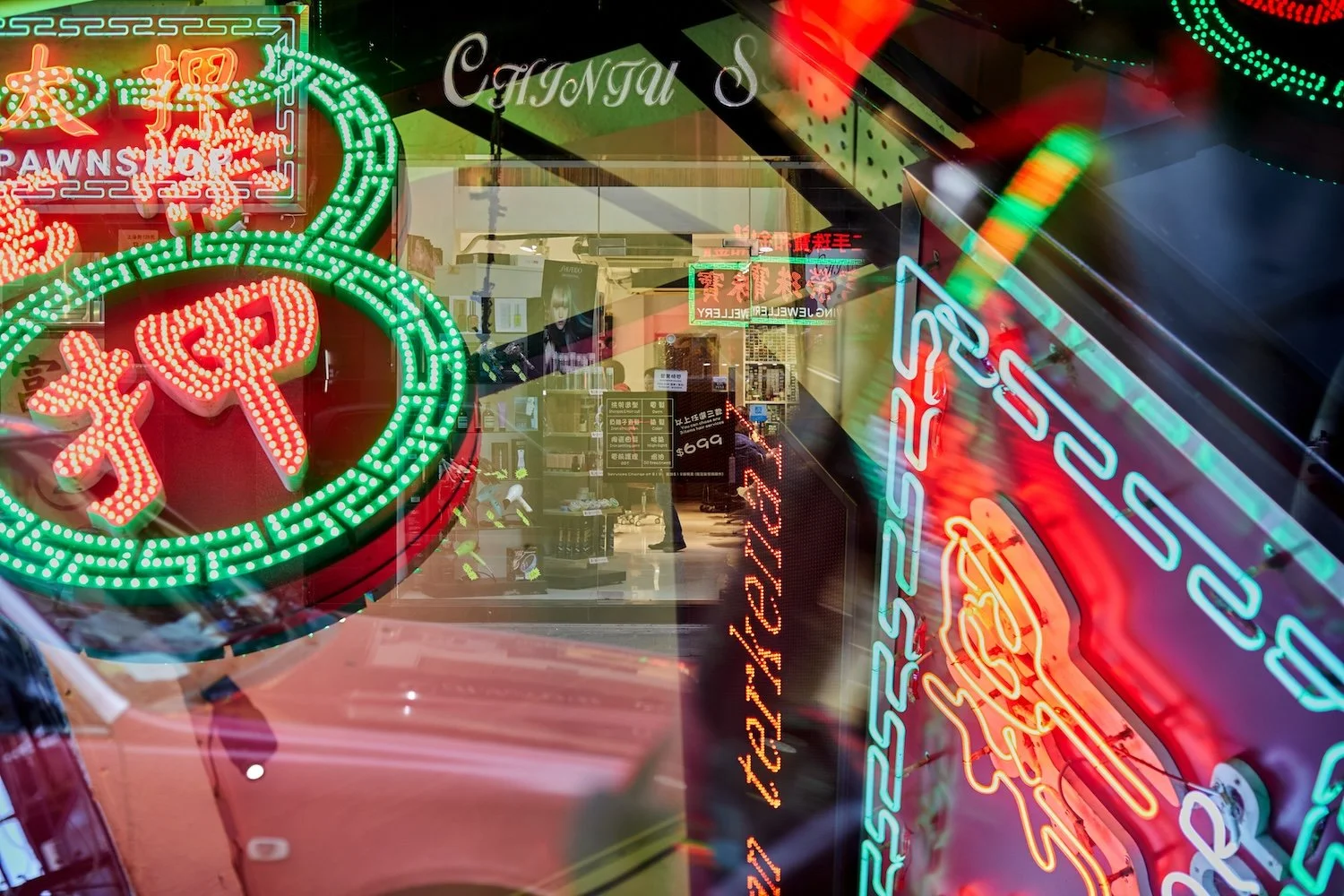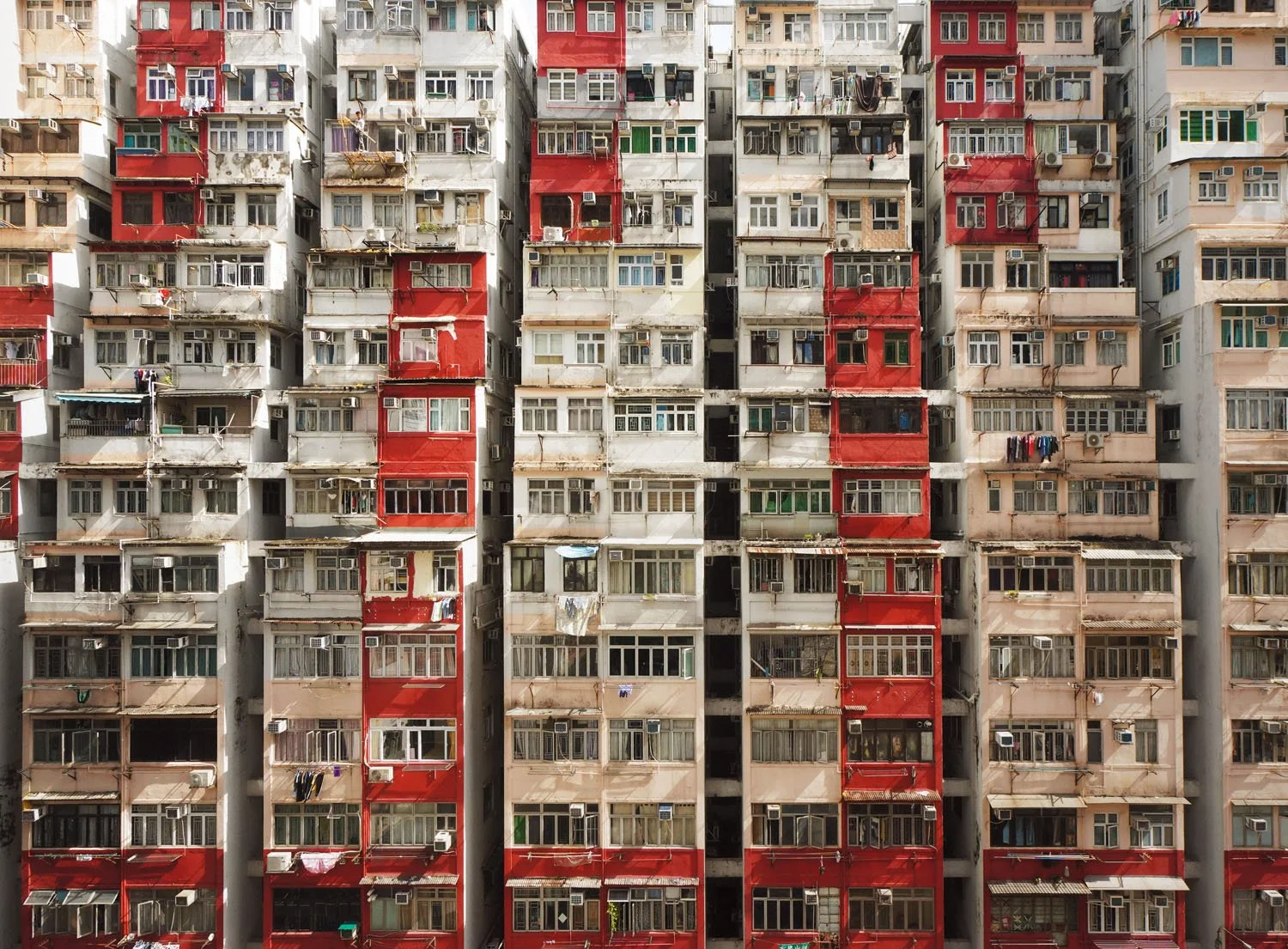American photographer Michael Kistler has spent the past two decades documenting urban life across the world. Originally from Minneapolis, he began his photographic journey at 18, exploring Europe with a compact Ricoh film camera. He subsequently settled in Tokyo, and spent a decade refining his distinctive — at times abstract — approach to street photography, using motion, blur, and layered compositions to capture the energy of urban life. In 2014, Kistler relocated to Hong Kong, where he continued to document the city’s streets with his characteristic eye for movement, composition, and colour, translating its unique rhythm into poetic, compelling imagery. Now back in the city after two years in Singapore, he continues to photograph and exhibit both in Hong Kong and internationally, while sharing his expertise through workshops and mentoring.
1. Your images often combine strong colour, motion, and layered city textures. Can you walk us through your process on the street, from spotting a scene to actually taking the frame?
Michael Kistler: Light, composition, and the moment are at the core of what I do. I identify locations with potential and then build compositions around either an interesting element or starting with a creative technique I think might fit well in that given situation. I am drawn less to the bright shiny object, per se, than to the idea and challenge of trying to create something interesting out of an otherwise everyday scene. And although HK is more intuitively a city of colour for me, I do shoot B&W a lot also, but it depends on the light and location.
2. Hong Kong has such a particular energy. How has living and shooting here shaped your practice and the way you see the city?
Michael Kistler: Hong Kong is electric, moving, and changing non-stop. I would say this type of energy naturally feeds my style of photography, as I am constantly trying to make sense of urban chaos by distilling it down into single frames. I can be in the middle of the busiest area of Hong Kong and find that everything slows down and becomes very quiet.
3. You’ve said, “Movement and motion have always been principal elements of my style.” Can you expand on that? How do you think about movement when composing and making decisions in the moment?
Michael Kistler: First and foremost, I am drawn to the aesthetic of blurred movement. When done well, it can be very beautiful and almost impossible to repeat in the same way again. I rarely, if ever, use a tripod, so I am either using various urban surfaces to stabilise my camera or experimenting with ICM (intentional camera movement). I am quite minimalist when it comes to gear, but I like the results of having certain constraints and limitations while also employing as much of the environment as I can.
4. You shoot both on your iPhone and traditional cameras. What do you enjoy about each medium, and how does your approach shift between them?
Michael Kistler: I actually shoot very little on my phone, only using it for snaps here and there. If I am creating fine art content, doing a shoot, or coaching, I will always be working on a professional camera. However, I don't believe camera choice is overly important in the end; a camera is a tool and a vehicle for producing what hopefully is a compelling image. My philosophy is that photography should be principally concerned with image creation, not equipment.
5. Through your workshops and mentoring, you’ve guided many photographers in developing their street practice. What’s the most common challenge you see students face, and how do you help them overcome it?
Michael Kistler: I think most people find the aforementioned combination of light, composition, and moment the most challenging, and this is why it has become the ultimate point of emphasis for me when I am coaching, mentoring, and leading workshops. Another challenge is establishing a recognisable style in their photography--there is a tendency with less experienced photographers to want to shoot everything. I work with people a lot on training and developing their eye, which eventually will allow them to be more discerning about what they are shooting and also more successful at reducing larger scenes into more impactful frames.
6. What’s one piece of practical advice you’d give to emerging street photographers who are trying to develop their own voice?
Michael Kistler: Shoot, shoot, and shoot! But shoot with intention. I would say it's very important to be considered in one's photography: what are you shooting and how do you want it to look? This allows a person to then work almost backward to find the right technical combinations as well as creative techniques to achieve their desired images.
7. Looking ahead, are there any projects, ideas, or directions you’re excited to explore next, either in Hong Kong or beyond?
Michael Kistler: I have some Tokyo workshops coming up, as well as working to develop more regular street workshops in Macau. Additionally, as I have spent a lot of time working to further develop my Tokyo portfolio over the last two years, I am planning a solo exhibition of a selection of B&W work early in 2026.










